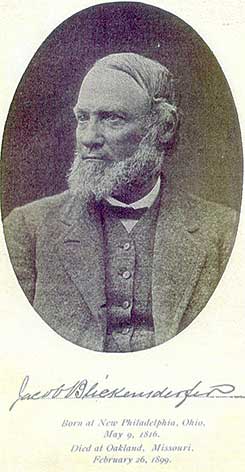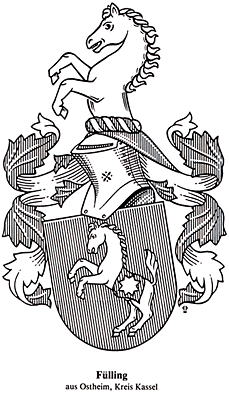As Real As Any Fantasy: The Art of Ford Ruthling (December 23, 2011)
Down a gravel path in the South Capitol neighborhood of Santa Fe sits the home of artist Ford Ruthling. Little has been written about the man that doesn’t focus heavily on his house and gardens; his adobe enclave is festooned with the sort of local architectural and decorative touches—furnished portales, nichos, santos, brightly colored “outsider” art and assemblage—that charms visitors into thinking Santa Feans live in a fantasy world. Ruthling is well known for his oil paintings of Native American pottery, some of which became a series of U.S. postage stamps in 1977. He also used an embossed painting technique, for which he stamped designs in tin and then inked and pressed the tin to create images, many of which feature religious iconography and themes.
Interviewing Ruthling these days is something of a challenge. He is getting on in years, and his short-term memory has suffered. He met with Pasatiempo in connection with the retrospective of his work opening at The Owings Gallery on Friday, Dec. 23. We settled in his comfortable living room, in front of a crackling fire, and were joined by gallery manager Laura Widmar, family friend John Edwards, Edwards’ 4-year-old daughter, Kristin, and two small dogs, Choo-Choo and Tina.
Ruthling was born in Tesuque in 1933. His mother, a German immigrant named Helene, was governess to the grandchildren of heiress and arts patron Mabel Dodge Luhan. Ruthling has an older sister, Theodora, and a twin brother, Carl. Their father, Paul, left the family when Ford was very young. To earn a living, Helene opened a nursery school for boarding students called Rancho Arroyo. “My mother raised children in sort of like a summer camp that ran year-round,” Ruthling said. He grew up across from the Tesuque post office, next to an apple orchard, under the benevolent watch of his maternal grandparents. A local artist came to the school to teach the children to paint. “We weren’t that gifted,” Ruthling said. His mother had many artist friends, and so Ruthling was also able to study under such luminaries as Will Shuster, Josef Bakos, and William Penhallow Henderson, whose daughter, Alice Rossin, owned the famous Tesuque eatery, El Nido, for many years. Ruthling still has strong feelings about Rossin’s scandalous marriage to the much younger Carlton Colquitt late in her life. “He met Alice through me, and he married her for her money. I separated from our friendship over that.”
“Did you ever marry?” I asked.
“Did I ever marry? No, but I am married to Robert, if you want to call it that—we never have. I’m gay. I don’t know if you know that.” Robert Mason, with whom Ruthling has lived for many years, walked through the living room later in the interview; he had just come from hearing a morning concert of classical music.
“What do you want to know? Ask me anything,” Ruthling said.
“You have religious symbols in your work, so I was wondering if you had a religious upbringing.”
“I was born into a Lutheran family. I think maybe there were two other Lutheran families in town when I was growing up—I don’t think any of us went to church. Grandpa used to say to go out to the orchard to pray. Grandma and grandpa grew up in Germany, and the Lutherans hated the Catholics, but we were surrounded by Catholics, and we loved them all. How could you not? My grandparents’ prejudice had no influence on me. I could be Catholic. I’m not, but I could be.”
We looked through the catalog for the exhibition, and I asked him about God Gave Us Food – The Devil Brought Cooks. “Where did some of this imagery come from? The pretzels, the fish. There’s a watermelon, an artichoke.’
“That’s all very apparent, and I shouldn’t have to answer that question. She’s asking me very perplexing questions,” Ruthling said to Edwards.
“Well, normally when you give these talks, you say, ‘This painting is about me and my brother,’ or ‘This one’s about my grandmother.’” Edwards tested Ruthling’s blood sugar, explaining that he can get short-tempered if it’s low. It was; we broke for chocolate. Ruthling asked Kristin for a hug and teased her about what might be inside her plastic cup. “Are you drinking coffee?” he asked. “Milk!” she shouted.
“What about this one—Cows Have an Inner Light (Remembering My Grandmother – Frieda Maurer)?” I asked. “I know it’s about your grandmother, but I was wondering if there was a story behind it.”
“Grandma always kept a milk cow. When she went to the stables every morning, she always took me and my brother with her. The cow was no ordinary cow—it was really like part of the family. We would slide under the cow, and she would squirt milk right into our mouths.”
“Was it good?” Widmar asked, her tone skeptical.
“It was very good. It was perfectly hygienic. I loved grandma dearly. She was really a better friend to me than my mother. And I still love milk.’
“We go through about two gallons a week,” Edwards said. Ruthling said he was exaggerating.
Edwards took out a thick binder filled with Ruthling’s family photos and written memories that are being collected for a book project. A picture of Ford with his brother, sister, and mother showed the twins wearing their blond hair past their ears in a shaggy pageboy style. “When we were little kids, ma didn’t want to cut our hair,” Ruthling said. “Sometimes people would come by and say what nice little girls she had. She got tired of saying we were little boys, so she just let it go and didn’t correct them.”
In 1954, the Ruthling boys joined the Air Force. After Cadet Corps training in San Antonio, Texas, Ford was assigned to a squadron in Presque Isle, Maine. He served as a radar interceptor officer, seated behind the pilot in a plane known as the F-89, or Scorpion. He made deep and lasting friendships in the Air Force and escaped what he came to consider the harmful, dominating influence of his mother. It is perhaps strange that his mother was close friends with Pamela L. Travers, the author of Mary Poppins, which Ruthling insisted was loosely based on his family’s household—though Mary Poppins was published before Travers came to New Mexico.
“He has claimed that,” Edwards said.
“She did so, on us kids,” Ruthling said, glancing again through the pictures. “You don’t want to see all this shit, do you? What else can I tell you about?”
“How did you come up with your embossed painting technique?”
He ran a hand through his white hair and sighed. “It was by chance and by struggle. One just thinks about it, and it kind of works with the process. How else would anybody explain that? And I have always just liked this saying very much,” he said, pointing to a page in his exhibition catalog that features a ceramic plate and a print, both emblazoned with hearts and the phrase, adapted from the Song of Solomon, “Speak to me of apples, for I have tired of love.”
This article originally appeared in Pasatiempo 12/23/2011
Source: https://jlevin.ezpage.org/feature_articles/ford_ruthling/
Ruthling-related files and materials
- This is your life, Helena Ruthling
- Santa Fe living treasure: Helene Ruthling
- Santa Fe living treasure: Ford Ruthling
- Carleton ‘Carl’ Ruthling — Computer Scientist
- Santa Fe living treasure: Theo Raven
- As Real As Any Fantasy: The Art of Ford Ruthling
- A Prayer for all Creatures / Espanola Valley Humane Society, with Theo Raven
- Santa Fe artist Ford Ruthling was a master of multiple mediums
- A look back at some of the notable people who died in 2015
- Shop owner brought whimsy to downtown Santa Fe

